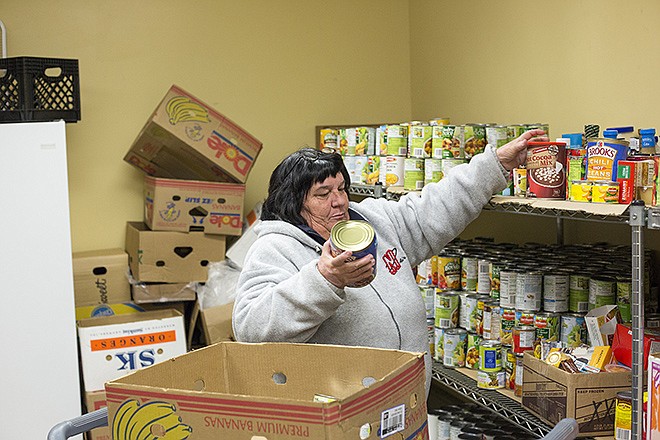The percentage of Missouri households that report struggles to buy food has steadily declined for the past eight years, according to a study the nonprofit Food Research and Action Center released early this month.
Still, 14.2 percent of households said they struggled to buy enough food for themselves and their families.
The center works to eradicate poverty-related hunger and under-nutrition in the United States, according to its website. It attempts to identify the connections between poverty, hunger and obesity among low-income people. It also conducts research on the extent of hunger, its effects and solutions. The center supports stronger federal, state and local policies that will reduce hunger and obesity.
It monitors laws and serves as a watchdog for programs, provides training, assistance, and support on nutrition and poverty issues.
FRAC data show Missouri is ranked 27th in the nation in food hardship (where one is the worst).
They show 20.3 percent of Missouri households reported food difficulties in 2008, 19.7 in 2010, 19 in 2012, 16.1 in 2014 and 14.2 in 2016.
In Missouri households with children, the rate is 16.8 percent. In households without children, the rate is 12.8 percent. Nationally, households with children are about one-third higher than households without children.
"Food hardship affects people in every community in Missouri although it often goes unnoticed by those not experiencing it," Jeanette Mott Oxford, executive director of Empower Missouri, said in a statement. "Many parents skip meals so that their children can have more food, and this can impact their health and job readiness."
"How Hungry Is America?" a report created from data collected through a Gallup poll, looks at rates at which Americans answered "yes" to the question "Have there been times in the past 12 months when you did not have enough money to buy food that you or your family needed?"
"After several years of fairly continuous improvement (reductions) in the food hardship rate as the nation recovered from the recession, the (national) food hardship rate rose from 15.1 percent in 2016 to 15.7 percent in 2017," according to the report.
Studies like that done by FRAC only represent a snapshot in time, said Lindsay Lopez, executive director of the Food Bank for Central and Northeast Missouri.
"What we see is that the numbers remain fairly consistent," Lopez said. "One in six adults and one in five children remain in food insecurity in the 32 counties we serve in the state of Missouri."
The food bank serves an area which makes up about a third of the state, she said. And most of those counties are largely rural.
What the pantry sees is that more and more of those communities have people living in poverty and who are food-insecure.
"More than 50 percent of the people we are serving have at least one employed person in their households," Lopez said.
However, they may not be working full time or their wages may not be adequate to keep enough food on their tables.
The food people receive from the food bank allows them to stretch their dollars to other needs, Lopez said.
The FRAC data doesn't reflect what is happening at The Salvation Army in Jefferson City, Salvation Army Lt. Rachel White said.
"That kind of surprises me. I've been here four years," she said. "I have not seen a decline in families and individuals seeking assistance in the food pantry."
White said her perception is that the number of people who come to the shelter seeking food has increased over time. The Salvation Army may have an increase year-to-year in 2018, she said.
"We are on target to serve 3,500 families - 8,500 people," she said.
There also seems to be little change in the number of people hungry who go to the pantry at the Samaritan Center, center Executive Director Marylyn DeFeo said.
The pantry constantly has people who come in for food, she said.
"We serve at least 1,400 families every month," DeFeo said.
One of the ways the center does that is through its only annual fundraiser, "Glow of the Garden."
The center's event takes place each summer. This year, the mid-July gala attracted more than 700 people.
It raised $147,056 for the center.
On the following Monday, the center dipped into $50,295 in donations designated for the food pantry so it would have milk, granola bars, macaroni and cheese, and other foods for the pantry. The rest went to the center's endowment fund, which is intended to assure it will be available to help Central Missouri people in the future.
Jeni DeFeo, a teacher who is the special events coordinator for the Samaritan Center, said it is her observation that more and more people are moving into the Jefferson City area from larger urban areas. They are "doubling up" with grandparents and extended family members. Homes might include children from four or five different nuclear families, she said.
"I think that the (FRAC) research is misleading," Jeni DeFeo said. "It's not what we see every day."

